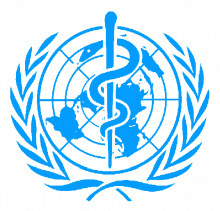WHO guidance to protect health from climate change through health adaptation planning
. Overview of the National Adaptation Plan (NAP) process and purpose of the guidance
Sustainable development became a formal global process in 1992, when the three Rio Conventions (i.e. on biodiversity, climate change and desertification) were adopted at the Earth Summit. The 1992 United Nations Framework Convention on Climate Change ( UNFCCC) and its Kyoto Protocol, adopted in 1997, refer to the legal frameworks that maintain the international climate change process and agenda. Both legal instruments are serviced by the Climate Change Secretariat or UNFCCC secretariat.1 The Secretariat is accountable to the Conference of the Parties (COP) to the Convention, which meets annu- ally to negotiate and further discuss the international climate change agenda and related commitments from countries. Articles 72 and 93 of the UNFCCC set the framework for international organizations to cooperate and contribute technically in their respective areas of work to the COP and to its subsidiary body for scientific and technological advice.
The World Health Organization (WHO) is contributing its technical and programmatic experience to the UNFCCC process. WHO has been working on climate change and health for over 20 years, building on its long experience in supporting countries to build resilience of their health systems, to facilitate modifications of current systems to reduce the health risks posed by climate variability and change.
Created under the global UNFCCC climate change agenda, the National Adaptation Plan (NAP) process builds on the National Adaptation Programmes of Action (NAPA) process that was designed to support least-developed countries (LDCs) to identify pri- ority actions to respond to their urgent and immediate adaptation needs. The NAP process is intended to provide support for medium- and long-term adaptation planning needs in LDCs and other developing countries.4
Having the UNFCCC in general, and the NAP process in particular, as a framework, the present guidance aims to ensure that the health sector works with partners in the envi- ronment and other related communities, and follows a systematic process to: 1. Engage in the overall NAP process at the national level. 2. Identify national strategic goals for building health resilience to climate change (if coun- tries have not done so through, for example, a National Health Adaptation Strategy). 3. Develop a national plan with prioritized activities to achieve these goals, within a spe- cific time period and given available resources.
The guidance outlines the process to be followed to ensure these goals are achieved. In addition, further guidance on how to plan for building climate resilient health systems at country level is provided.
Files
Document Tabs

